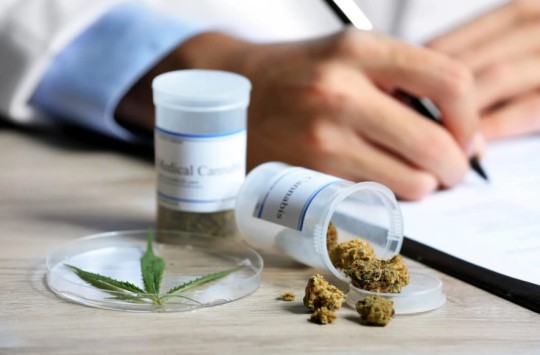Don't wanna be here? Send us removal request.
Text
Drug-Induced Psychosis: A Dangerous Reality

Drug-induced psychosis is a severe mental health condition characterized by distorted perceptions of reality, hallucinations, and delusions caused by substance abuse. While various drugs can lead to psychosis, certain substances, such as hallucinogens and stimulants, are more commonly associated with this condition. Understanding the risks of drug-induced psychosis is crucial for preventing its occurrence and seeking help for those who may be affected.
It is important to note that drug-induced psychosis is not a permanent condition. In many cases, the symptoms will subside once the individual stops using the substance. However, if left untreated, drug-induced psychosis can have serious consequences, including increased risk of suicide, violence, and other harmful behaviors.
For more information on drug-induced psychosis, its causes, symptoms, and treatment options, visit our blog.
1 note
·
View note
Text
A Cinematic Exploration of Schizophrenia: A Guide to Must-Watch Movies

Schizophrenia, a complex mental health condition, has been portrayed in various ways throughout cinematic history. From sympathetic depictions to sensationalized stereotypes, movies have attempted to capture the nuances of this disorder. This blog post explores some of the most notable films that delve into the world of schizophrenia, offering a glimpse into the experiences of those affected by this condition. By examining these films, we can gain a better understanding of the challenges faced by individuals with schizophrenia and the importance of accurate and compassionate portrayals in media.
For a deeper dive into the cinematic representation of schizophrenia and the valuable insights these films can provide, visit our blog.
0 notes
Text
Ozempic Face: A Side Effect to Watch Out For

Ozempic, a medication used for type 2 diabetes, has gained popularity for its weight loss benefits. However, like any medication, it can have side effects. One such side effect is "Ozempic face," which refers to changes in facial appearance that can occur with rapid weight loss. These changes may include facial sagging, hollow cheeks, thinning lips, and loss of facial fat. While these effects may not be severe for everyone, you must be aware of the potential risks and discuss them with your healthcare provider. If you want more information on Ozempic face and its implications, visit our blog to learn more.
0 notes
Text
The Psychedelic Mind: A Deeper Dive into Magic Mushrooms

Magic mushrooms, with their potent psychedelic effects, have captivated both recreational users and scientific researchers. These fungi, containing the psychoactive compound psilocybin, can induce profound alterations in consciousness, leading to hallucinations, altered perceptions, and profound spiritual experiences. Recent studies are shedding light on how these mushrooms interact with the brain, revealing fascinating insights into the nature of consciousness and the potential therapeutic applications of psychedelics. While their use carries risks, magic mushrooms offer a promising avenue for exploring the depths of the human mind and potentially treating mental health conditions.
This article delves into the latest findings on psilocybin, the active compound in magic mushrooms, its interaction with the brain, the risks of overdose, and its potential implications for mental health treatments.
0 notes
Text
What is Trauma Dumping?

Trauma dumping occurs when someone shares their traumatic experiences with others in an unfiltered and overwhelming way, often without considering the listener’s emotional boundaries. While sharing experiences can be a vital part of healing, trauma dumping can strain relationships, leaving others feeling emotionally burdened or helpless. This behavior is usually driven by a need for immediate relief, but it can be counterproductive, pushing people away and reinforcing feelings of isolation. Recognizing the difference between healthy sharing and trauma dumping is essential for maintaining supportive relationships and fostering genuine connections.
If you find yourself or someone you know engaging in trauma dumping, it’s essential to explore healthier ways of processing and sharing difficult emotions. For more information on how to approach trauma sharing in a balanced way, visit our blog for guidance and resources.
1 note
·
View note
Text
Understanding Childhood Trauma and What it Looks Like

Recognizing childhood trauma can be challenging, as its effects often manifest in subtle, easily overlooked ways. Adults with unresolved trauma from their early years may struggle with anxiety, depression, or difficulty forming healthy relationships. Common signs include persistent fear, intense emotional reactions to triggers, and avoidance of certain situations or people. These issues might also appear as physical symptoms like unexplained aches or fatigue linked to long-standing stress. Understanding these signs is crucial for healing, as they often indicate past experiences that need attention.
To explore the signs of childhood trauma and steps toward healing, visit our blog for more insights and resources.
0 notes
Text
Living With Dissociative Identity Disorder

Living with dissociative identity disorder (DID) can profoundly affect daily life, presenting unique challenges that impact various aspects of an individual's routine. People with DID often experience significant disruptions in their sense of identity, leading to memory gaps, confusion, and a disjointed perception of reality. These disruptions can make it difficult to maintain stable relationships, as loved ones may struggle to understand the sudden shifts in behavior and personality. Additionally, managing work or academic responsibilities can become overwhelming, as the presence of multiple distinct identities may interfere with concentration, consistency, and the ability to meet deadlines.
The emotional toll of DID can also be considerable, with individuals often feeling isolated or misunderstood due to the complexity of their experiences. Everyday tasks, which might seem simple to others, can become daunting when one's sense of self is constantly shifting. Navigating social situations, making decisions, and even performing routine activities like grocery shopping can be challenging when different identities take control at different times.
Effective management of DID requires a comprehensive approach, including therapy, support networks, and coping strategies tailored to the individual's needs. Understanding this condition is crucial for both those affected and their support systems.
To delve deeper into how DID affects daily life and explore strategies for coping, visit our blog for more information and resources.
1 note
·
View note
Text
PTSD vs. C-PTSD

Comparing PTSD and Complex PTSD (C-PTSD) reveals important distinctions that can influence how each condition is understood and treated. While both are responses to traumatic experiences, PTSD typically arises from a single traumatic event, whereas C-PTSD develops from prolonged or repeated trauma, often involving long-term abuse or captivity. These differences result in varying symptoms, with C-PTSD including additional challenges like difficulties in emotional regulation, self-perception, and interpersonal relationships. Understanding these distinctions is essential for recognizing and addressing the unique needs of those affected by each condition.
To explore the differences further and learn about the best approaches to treatment, visit our blog for detailed insights and guidance.
2 notes
·
View notes
Text
Reasons to Avoid Binge Drinking

Friday night marks the end of the workweek and the beginning of relaxation for many, often involving socializing and drinking. However, binge drinking, characterized by consuming large amounts of alcohol quickly, poses significant risks. For men, this means five or more drinks in two hours, and for women, four or more. This behavior, common among "weekend warriors" who drink heavily on weekends, can lead to serious health problems such as liver damage, cardiovascular issues, and a higher cancer risk. Binge drinking also affects mental health, causing mood swings, anxiety, and depression, and can damage relationships and social interactions due to impulsive and poor decision-making.
Additionally, it increases the likelihood of accidents and negatively impacts professional life by decreasing productivity and job performance. To mitigate these risks, individuals should set drinking limits, pace their alcohol consumption, alternate with non-alcoholic drinks, and seek healthier ways to relax and relieve stress.
Visit our page here to learn more today
0 notes
Text
What Makes Boundaries So Crucial For Recovery?

Living with or being close to someone struggling with addiction can be incredibly challenging, but setting boundaries is a crucial step toward maintaining your well-being and supporting their recovery. Establishing boundaries in addiction recovery is essential for preserving your mental and emotional health while encouraging the addict to seek help. Boundaries help protect you from the emotional turmoil of addiction and provide the addict with a structured environment that promotes accountability and personal responsibility. Learn how clear boundaries can prevent enabling behaviors, foster a healthier relationship, and potentially accelerate the addict's journey to recovery.
Visit our page to discover strategies for setting effective boundaries and find the support you need to navigate this difficult path.
0 notes
Text
The History of Sober Living

The addiction crisis in the U.S. has increased the demand for reliable sober living accommodations. Historically known as "halfway houses," these homes have evolved significantly over the past 20 years. Initially run by non-professionals, they provided a safe place for early recovery, emphasizing accountability through shared spaces, curfews, and drug screenings.
Early sober living homes offered basic amenities, requiring residents to work and buy their own food, fostering camaraderie and communal living. Shared challenges of addiction and recovery created strong bonds among residents, offering a therapeutic and supportive environment.
Despite their benefits, some halfway houses were exploited for profit, neglecting residents' welfare. However, the recovery community has worked to standardize and regulate sober living homes. Organizations like the National Alliance for Recovery Residences (NARR) now vet and certify these homes to ensure quality and ethical management.
Today, sober living homes are vital for newly recovered individuals, providing essential support during the fragile early recovery phase. They offer fellowship, guidance, accountability, and often host 12-step meetings, job assistance, and family reunification services. These homes are now more crucial than ever in supporting long-term recovery.
Click here to learn more.
0 notes
Text
Meth Detection Timeline

Understanding methamphetamine addiction and detection involves knowing the drug's effects and recovery strategies. Methamphetamine, or meth, is a potent stimulant with lasting effects, detectable in various bodily fluids. In urine, meth can be detected for 1-4 days after use, in blood for 1-3 days, in saliva for 1-2 days, and in hair for up to 90 days. While these are general guidelines, chronic meth use can have severe long-term health effects.
To pass a meth drug test, it is essential to stop using methamphetamine and allow time for the drug to leave the body. Drinking water and engaging in activities that promote sweating, such as exercise, can help remove toxins. Seeking assistance from healthcare providers for managing withdrawals safely is also crucial.
Click here to learn more.
0 notes
Text
Is Ketamine an Opioid?

No, ketamine is not an opioid, despite frequent confusion due to their similar pain-relief functions. While both are potent analgesics, they differ in pharmacological mechanisms and chemical structures. Ketamine acts as an NMDA receptor antagonist, whereas opioids bind to opioid receptors. However, their shared usage in pain management and presence in medical and recreational settings contribute to ongoing confusion.
In terms of similarities, both ketamine and opioids provide pain relief through distinct pathways and can depress the central nervous system, leading to sedation and respiratory depression. However, differences between the two drugs are significant. Ketamine modulates glutamatergic transmission, while opioids bind to opioid receptors. Ketamine is less likely to cause respiratory depression and is not associated with constipation, tolerance, dependence, and addiction like opioids. Additionally, ketamine can induce hallucinations and perceptual distortions, unlike opioids. Opioids have a higher potential for abuse and addiction compared to ketamine, and they are mainly used for pain management, whereas ketamine is used for both pain relief and anesthesia.
Regarding ketamine overdose, it is possible, though rare when used therapeutically. Symptoms include confusion, hallucinations, respiratory depression, and loss of consciousness, with severe cases leading to respiratory depression or cardiovascular collapse. Overdose risk increases in recreational use, where doses and purity are unknown. It's essential to follow dosage guidelines and avoid mixing ketamine with other CNS depressants. In case of a suspected overdose, immediate medical attention is necessary.
Visit us here to learn more.
0 notes
Text
Addiction, Trauma, and The Family System

As per the American Psychological Association, trauma is described as "an emotional response to a catastrophic event such as an accident, assault, or natural calamity." However, this definition barely scratches the surface of the profound impact trauma can have on individuals and families. One of the prevailing misconceptions surrounding trauma is the belief that once it's in the past, we can simply "move on" or "let it go," thus stripping it of its power over us. The ramifications of trauma often persist throughout an individual's lifetime until it is adequately addressed. Many individuals affected by trauma are unaware of its underlying influence. They may recognize symptoms such as addiction, engaging in unhealthy behaviors, or distorted thinking, yet fail to connect these issues back to the trauma they've experienced. For further insights, click the link provided below.
1 note
·
View note
Text
Understanding Legal Marijuana Products

If you're feeling a bit perplexed by the sudden surge in advertisements promoting marijuana-based products, rest assured, you're not the only one. It's becoming increasingly apparent that more and more states are moving towards the legalization of recreational marijuana. As of the time of writing, recreational marijuana possession and usage have been given the green light in 24 states. However, what's really catching attention is the emergence of a trend where products claiming to contain THC (the active ingredient in cannabis) are being marketed online and shipped to states where recreational marijuana remains firmly illegal. This begs the question: How exactly is this happening? Is it a legitimate business maneuvering through legal gray areas, or could it be a deceptive ploy exploiting regulatory loopholes? Unraveling the complexities and implications of this phenomenon requires a closer look at the ever-evolving landscape of marijuana legislation, the dynamics of e-commerce, and the shifting societal perspectives on cannabis usage. To gain a deeper understanding of this intriguing topic, click the link below for comprehensive insights and analysis.
0 notes
Text
Opioid Addiction Treatment

In discussions surrounding opioid addiction, a recurring question often emerges: how can one discern if someone is struggling with opioid addiction? This inquiry typically arises from either a heartfelt concern for a loved one suspected of grappling with opioid dependency or from a personal introspection, where individuals confront suspicions of their own opioid dependence yet find it daunting to acknowledge and seek assistance. While the formal diagnosis of opioid use disorder (OUD) necessitates the evaluation and expertise of a trained medical professional, there exist telltale signs that may suggest opioid dependency. Opioid addiction is notorious for its elusive and deceptive nature, often described as cunning, baffling, and formidable. Individuals entrenched in opioid addiction often exhibit a remarkable ability to mask their struggles. They understand all too well that exposure could imperil their ability to sustain opioid use, which may have assumed paramount importance in their lives. Consequently, they may resort to elaborate measures to evade detection, perpetuating the cycle of addiction. Despite the covert nature of opioid addiction, there are subtle behavioral shifts and observable patterns that may betray its presence. These can encompass alterations in mood and demeanor, withdrawal from social interactions, financial distress, neglect of obligations, and physical manifestations such as constricted pupils, frequent drowsiness, and abrupt weight fluctuations. Recognizing and comprehending these indicators is pivotal for intervening and extending support to individuals ensnared by opioid addiction. By fostering awareness and compassion, we can cultivate an environment conducive to seeking help and embarking on the journey to recovery. For further insights and resources on opioid addiction and its complexities, we encourage exploration of the provided link.
#substance abuse#substance abuse treatment#substance abuse care#addiction treatment#addiction care#opioid addiction#opioid abuse care
1 note
·
View note
Text
How Can I Tell If Someone Has Alcoholism?

The question of identifying alcoholism is one that frequently arises: How can we discern whether someone, including ourselves, is grappling with alcohol addiction? While a definitive diagnosis of alcohol use disorder necessitates professional assessment, there are clear signs to observe and pertinent questions to ask that can shed light on the situation. Outlined below are 15 potential indicators of alcoholism (alcohol use disorder). If you notice more than 2 or 3 of these signs in yourself or someone you care about, it strongly suggests that considering alcohol addiction treatment is advisable. For further insights on this matter, you're welcome to click the provided link below.
#substance abuse#substance abuse treatment#addiction treatment#addiction care#alcoholism#alcoholism treatment
0 notes